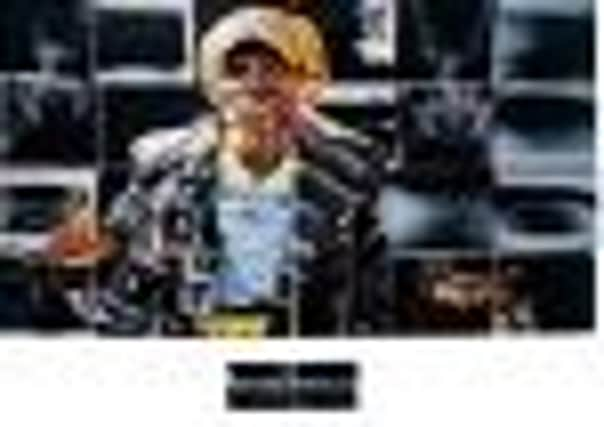UK black art group look back on anger


RIOTS tearing the county apart, a Conservative Government speaking out in fiercely anti-immigration terms, far-right politics on the rise – sound familiar?
This is a picture of Britain not today, but in 1983, when a fiercely political group came together to create works of art that spoke about and challenged the social issues of the day.
Advertisement
Hide AdAdvertisement
Hide AdIn 1983, when the Brixton Riots were shaking the country, Eddie Chambers, Keith Piper, Donald Rodney, Claudette Johnson and Marlene Smith came together to create work about what they described as the “institutional racism that was endemic in the UK”.
Against this backdrop and taking in global politics such as South Africa’s apartheid policies, the artists came together to create the BLK Art Group.
The all-black artist group created work that dealt directly with the political and social unrest they witnessed in their country and around the world.
At the time, founder member Keith Piper mounted a series of seminal exhibitions, featuring the work of young Black British artists, between 1980 and 1984, under the collective title of The Pan-Afrikan Connection.
Advertisement
Hide AdAdvertisement
Hide AdAt the time the arts establishment was nervous of overtly showing its support for such a politically minded group and it took a few brave organisations to recognise the work producer by the BLK Art Group as culturally significant and collect it. Sheffield was one of the brave cities.
A new exhibition celebrates the work of this important group at Sheffield’s Graves Gallery, opening tomorrow and running until next Spring.
It will feature rarely seen works that were acquired for Sheffield during the 1980s. The exhibition will also explore the role that regional galleries, including those in the city, played in supporting and promoting black British art at a time when many public art institutions were reluctant to engage with the work of black artists.
Piper says he is staggered at just how relevant the work appears to be today, with the exhibition opening less than a month after the riots across the country, which led to much hand-wringing and discusssion from our political leaders about what has gone wrong with the country’s young people.
The exhibition certainly seems to be timely.
Advertisement
Hide AdAdvertisement
Hide Ad“It is an opportune moment to re-examine that work, 30 years on from the time when we were creating it,” says Piper, now a leading academic in the art world who has shown extensively, including solo exhibitions at the Ikon Gallery, Birmingham, The Camden Arts Centre, London, The Orchard Gallery, Derry and The New Museum, New York.
“Looking back at that moment, when we were reflecting the issues of the day in our art, it is interesting to see it in terms of the social unrest we have seen on the streets of Britain recently. In the early Eighties, when we were creating our work, the social and political sense feels quite similar to what we are seeing today.”
Perhaps if we understand our history, through the art the group created, we can begin to understand some of the issues we face today as a society.
Piper also paid tribute to Sheffield, which is one of the few cities that collected the work of the BLK Art Group during the Eighties.
Advertisement
Hide AdAdvertisement
Hide Ad“It is a reflection of a policy that not many regional galleries shared, which saw them display a great foresight, that Sheffield is able to stage this exhibition,” he says.
WORK BY THE BLK ART GROUP
The BLK Art Group: 1983 - 1984 will feature works by Eddie Chambers, Donald Rodney and Keith Piper.
The exhibition will see Chambers’ How Much Longer (1984) and Piper’s Black Assassin Saints (1984), alongside later work from Rodney’s Britannia Hospital series (1988) from Sheffield’s collection shown together for the first time in over 20 years. The Blk Art Group will also include Rodney’s installation The House That Jack Built (1987), and acknowledge the importance of the work of Marlene Smith.
The exhibition is at The Graves Gallery, Sheffield, from tomorrow.